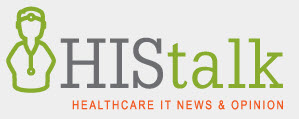02-14-2018, 12:03 AM
I have been talking and writing a lot about the concept of Interoperability 2.0 as I see a strong need for an upgrade to our interoperability capabilities in the healthcare industry. 2018 is going to see interoperability come even more to the forefront as regulatory action, pressure from value based payment and delivery models, and deeper partnerships between physicians and payers bring the needs for sharing health data into sharp focus.
HIMSS defines interoperability as the ability of different information technology systems and software applications to communicate, exchange data, and use the information that has been exchanged. Congress in the 21st Century Cures Act specifically defines interoperability in that it:
A. enables the secure exchange of electronic health information with, and use of electronic health information from, other health information technology without special effort on the part of the user;
B. allows for complete access, exchange, and use of all electronically accessible health information for authorized use under applicable State or Federal law; and
C. does not constitute information blocking as defined in section 3022(a).
The law also defines information blocking (and assigns some potential stiff penalties for violation) as a “practice that . . . is likely to interfere with, prevent, or materially discourage access, exchange or use of electronic health information” if that practice is known by a developer, exchange, network, or provider as being likely to “interfere with, prevent, or materially discourage the access, exchange, or use of electronic health information.” 42 U.S.C. §300jj-52(a).
Read Full TEFCA Blog Post
HIMSS defines interoperability as the ability of different information technology systems and software applications to communicate, exchange data, and use the information that has been exchanged. Congress in the 21st Century Cures Act specifically defines interoperability in that it:
A. enables the secure exchange of electronic health information with, and use of electronic health information from, other health information technology without special effort on the part of the user;
B. allows for complete access, exchange, and use of all electronically accessible health information for authorized use under applicable State or Federal law; and
C. does not constitute information blocking as defined in section 3022(a).
The law also defines information blocking (and assigns some potential stiff penalties for violation) as a “practice that . . . is likely to interfere with, prevent, or materially discourage access, exchange or use of electronic health information” if that practice is known by a developer, exchange, network, or provider as being likely to “interfere with, prevent, or materially discourage the access, exchange, or use of electronic health information.” 42 U.S.C. §300jj-52(a).
Read Full TEFCA Blog Post


